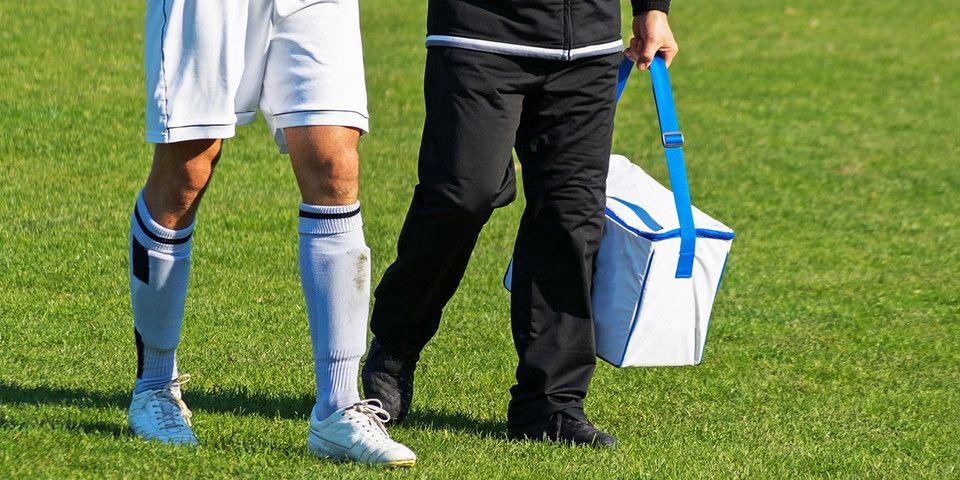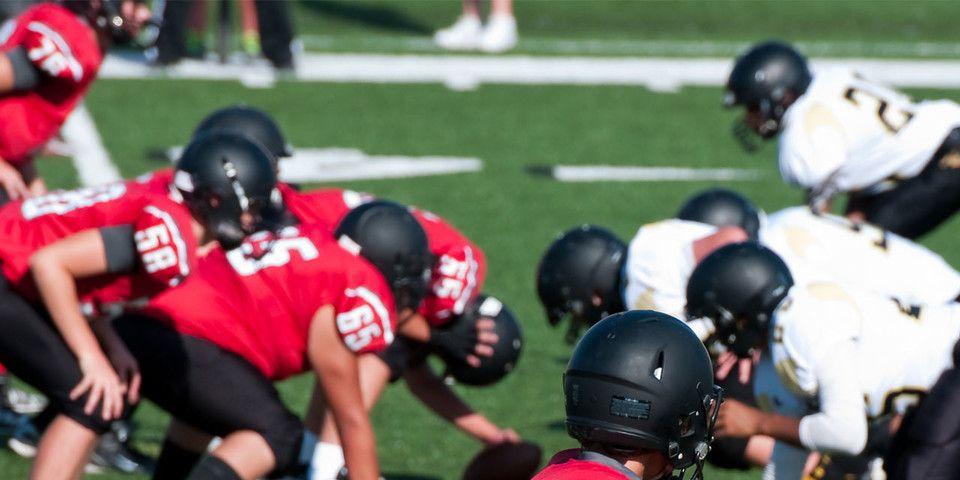Football Injury Prevention: Knowledge is Power
Know Which Football Injuries Are Most Common so You Can Prevent Them
Did you know that football is one of the most accident and injury prone sports? As a high contact sport, frequent injuries are common. And while many people are aware that serious football injuries are a problem in professional football, the same risks extend into the collegiate and high school ranks as well.
Are you or a loved one playing on a football team this fall? If so, awareness of the risks is your first step to football injury prevention. While there is never a guarantee against injury, there are certain steps that can be taken to help minimize your risk. Let’s take a closer look at the most common football injuries and how to prevent them.
Common Football Injuries
The more you know about the kinds of injuries that may occur as a football player, the better you can prepare yourself to avoid them. While there are many different types of injuries which may occur, there are four categories that are of primary concern:
-
Traumatic Injuries: The combination of high speeds and direct contact associated with football put athletes at a very high risk of traumatic injuries. These types of injuries usually occur suddenly and as the result of a direct force. Knee injuries, especially those to the anterior cruciate ligament (ACL) or posterior cruciate ligament (PCL), are the most common among football players. Ankle sprains and shoulder injuries are also very common. These injuries have the potential to impact a player’s long-term ability to participate in the sport.
-
Concussions: Football injury statistics in recent years have drawn attention to the problem of concussions among football players. A concussion is a traumatic brain injury which usually occurs from a direct blow to the head or a force which causes the head to snap back and forth violently. A concussion may or may not result in a loss of consciousness. Other signs of a concussion include headache, dizziness, nausea, loss of balance, drowsiness, numbness or tingling, difficulty concentrating, or blurry vision. One of the biggest concerns when a concussion is sustained is that adequate time is given for recovery. Repeated concussions, especially without a complete recovery from the previous concussion, severely increases a player’s risk of long-term consequences.
-
Overuse Injuries: Overuse injuries can occur during any sport or activity. They most commonly occur when training is too intense or increased too rapidly. Lower back pain and patellar tendonitis are among the most common overuse injuries seen in football. A proper training regime and targeted football injury prevention exercises can be effectively utilized to balance muscle strength and reduce overuse injuries.
-
Heat Injuries: Intense physical activity and hot weather combined with heavy protective gear and clothing is a recipe for overheating injuries. These factors may result in excessive sweating, dehydration, and overheating. The body may become incapable of regulating its normal temperature — resulting in heat exhaustion, heat stroke, or even death.
Football Injury Prevention Guidelines
Now that you are aware of the primary risks associated with playing football, let’s take a look at the measures you can take to minimize those risks.
-
Maintain fitness year-round: This is the number one step you can take to prevent overuse injuries. Rest is a good thing, but jumping into an intense season without any preparation will set you up for an overuse injury. This doesn’t mean you need to be playing football every day of the year. Maintain basic fitness through running, biking, swimming, or going to the gym.
-
Warm up, cool down, and stretch: Cold muscles are more prone to injury. Take some time to warm your muscles up through light exercise and then gently stretch to prepare your body for the workout ahead. At the end of every practice and game, take the time cool down and stretch to release muscle tension and prevent soreness.
-
Hydrate: Hydration is key for your overall body function and for football injury prevention. If you are even slightly dehydrated your performance can be affected. Significant dehydration can lead to heat illnesses.
-
Wear proper equipment: This is especially important for football players. Your equipment protects you during those head-on collisions. Make sure all of your equipment fits properly and is in good working order at all times.
-
Rest: If an injury does occur, whether it be a traumatic injury, overuse injury, a concussion, or a heat injury, get proper treatment and take the time to recover. Getting back in the game too soon only increases your risk of another, more severe, injury.
If you have any further questions regarding football injury prevention or are in need of treatment, Rothman Orthopaedic Institute is here to help. Visit us here or contact us at 1-800-321-9999.
Related Physicians
Related Specialties
Related Conditions
Related Treatments
Related Programs
-

Athletic Training- Sport Medicine Outreach
Our Field Athletic Trainers provide direct sports medicine care to youth, high school, college and professional athletes. Rothman AT’s provide athletic training services throughout Southeastern PA to interscholastic high schools, colleges, as well as tournaments and special events.Read More -

Injury Prevention Program
The Injury Prevention Program at the Rothman Orthopaedic Institute is dedicated to the prevention of injuries from athletic participation, particularly youth sports.Read More -

Sports Concussion Program
Concussion care is a special focus of Rothman's sports medicine program. We've developed the most advanced multi-disciplinary evaluation and treatment techniques based on research done by the concussion specialists here at Rothman Orthopaedic Institute.Read More




